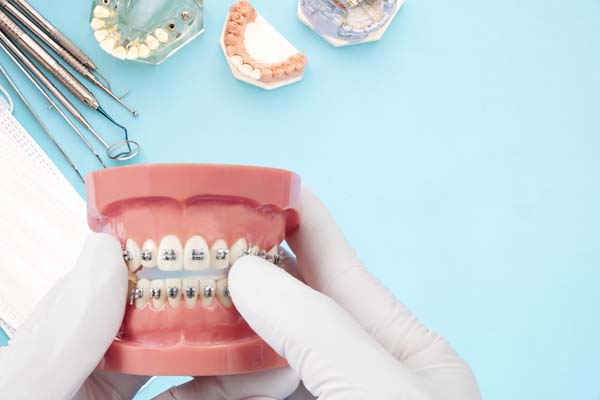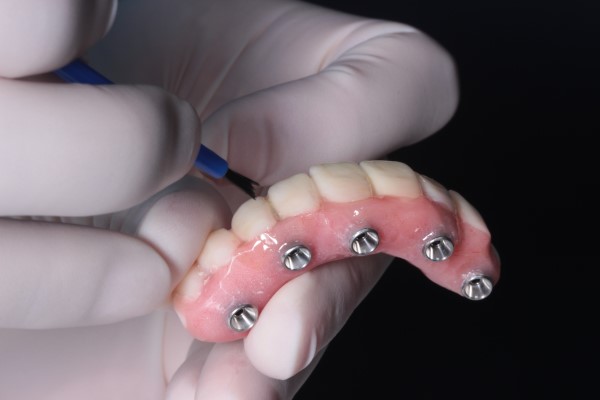Taking Care of Teeth After Orthodontics Treatment

Straightening your teeth with orthodontics improves how they look, particularly if your teeth are healthy after treatment. However, orthodontic appliances like braces tend to get in the way of cleaning teeth, and their components can serve as havens for food particles and oral bacteria that convert them into acids.
Clear aligners can also increase the wearer’s risk of tooth decay. These transparent plastic trays fit tightly over teeth and prevent saliva from washing away acids and food particles like it normally does. A person who has just completed treatment with orthodontics can have straightened teeth that have been damaged by tooth decay. The decay can lead to teeth structures breaking down and to teeth becoming discolored.
Oral hygiene after treatment with orthodontics
People who straighten their teeth with clear aligners are less likely to deal with tooth decay if they always clean their teeth before putting in their aligners. Things are a bit more complicated for people who wear braces. Regardless of how well they take care of their teeth during treatment, there might be decay that has built up underneath the brackets of the braces, and the device might leave stains on teeth.
Dentists typically recommend teeth cleanings following treatment with orthodontic appliances. Teeth cleaning removes tartar build-up on teeth and any stains on them. The procedure can drastically improve the appearance of a patient’s teeth after they have been straightened. Teeth whitening treatments can be performed if needed.
Good oral hygiene also helps protect a patient’s teeth and gums after teeth-straightening treatments. Dentists recommend the following.
Brush after meals with prescription-grade toothpaste
These products help mineralize teeth and provide a higher level of cleanliness than regular toothpaste. Brushing after every meal is ideal, especially if teeth have already been weakened by tooth decay.
Floss daily
Flossing teeth cleans interdental spaces. Flossing becomes even more important when teeth have already been weakened by decay during treatment with orthodontic appliances.
Use prescription-grade mouthwash
Mouthwash cleans all the areas in the mouth missed by brushing and flossing. A therapeutic mouthwash prescribed by a dentist kills oral bacteria, protecting teeth and gums from decay and gum disease, respectively.
Visit a dentist twice a year
A dentist has many tools at their disposal that can help protect teeth against decay, like dental sealants and fluoride treatments. A dentist can also provide any appropriate treatments for teeth that have been damaged by decay or infected gums. Treatments for decayed teeth include fillings, composite bonding, and dental crowns.
Good oral hygiene allows you to enjoy the results of your treatment
Good oral hygiene can help you avoid having to deal with tooth decay and gum disease due to your treatment with orthodontic devices. It can keep your teeth looking their best after your treatment. Call us or stop by our Mableton clinic to learn more about how to properly take care of your teeth after teeth-straightening treatments.
Request an appointment here: https://www.providencefamilydentistry.com or call Providence Family Dentistry at (678) 496-7021 for an appointment in our Mableton office.
Check out what others are saying about our dental services on Yelp: Orthodontics in Mableton, GA.
Recent Posts
A smile makeover can completely transform your oral cavity and give you the confidence and self-assurance that you have been seeking. However, you might be a bit nervous after getting your smile makeover: After all, what happens if you ruin the results? The good news is that the effects of a smile makeover are built…
Implant supported dentures are dentures that are held in place by implants. They are an effective option for replacing missing teeth. Dental implants are very popular because of their high success rate and advantages. Anyone considering implant supported dentures should take time to learn about the procedure. This includes the recovery process. After the procedure,…
Losing a tooth can be disconcerting. Thankfully, there are multiple dental restoration options to replace the missing tooth and restore dental functions. Read on to learn about available options. The choice ultimately boils down to the patient's oral condition and preferences. A dentist will recommend the proper treatment following a dental evaluation.The following are common…
Partial dentures are a great tooth replacement option for missing teeth. They are easier on the mouth than full dentures but not as costly as dental implants. Those that wear partial dentures can expect an easier eating experience, better speaking and an aesthetically pleasing smile. However, with partial dentures comes discipline, meaning the wearer must…


